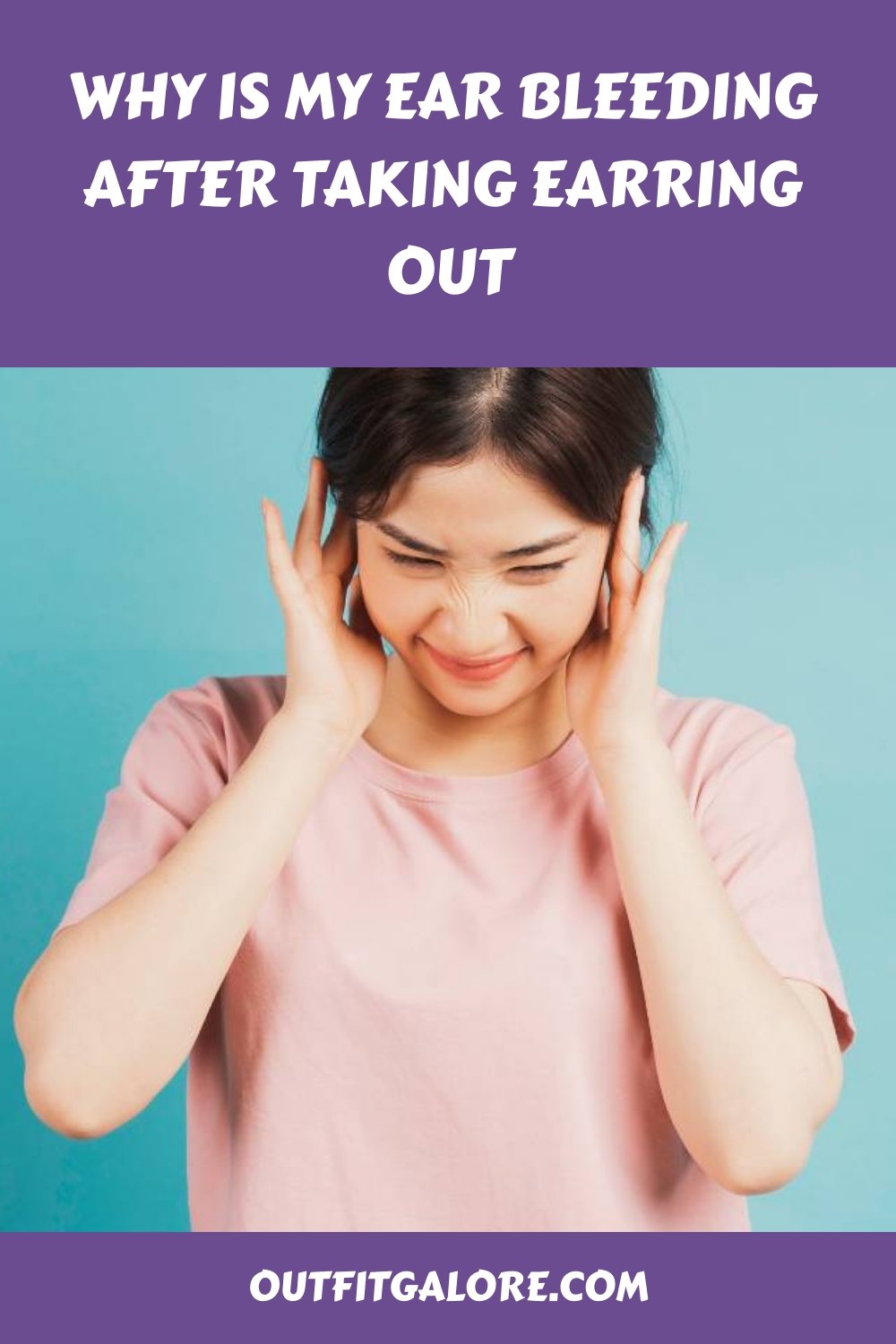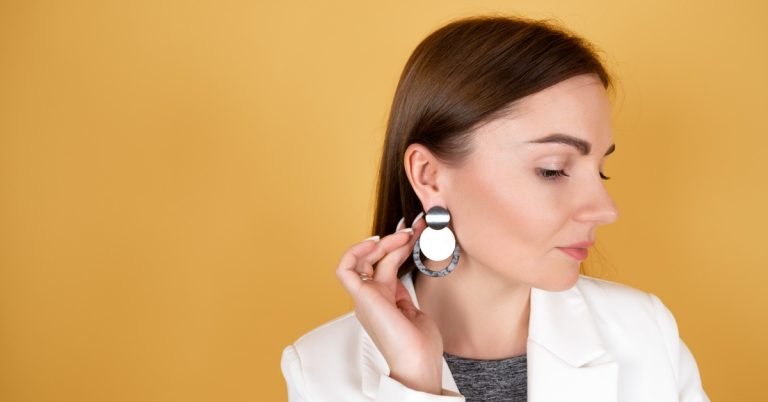Why Is My Ear Bleeding After Taking Earring Out?
Have you ever taken out an earring and been surprised to see blood? If so, you’re not alone. Bleeding from the ears is a common problem that can be caused by multiple factors.
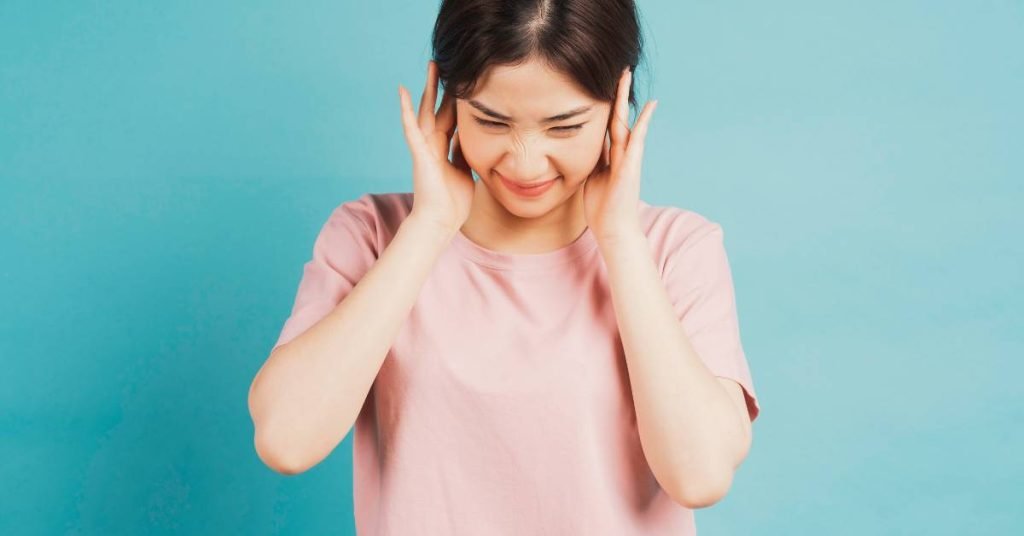
In this article, we’ll discuss why your ear may be bleeding after taking out an earring, as well as what you should do if it happens again. We’ll also provide information on how to prevent this type of bleeding in the future.
So keep reading to learn more!
Table of Contents
Key Takeaways
- Bleeding from the ear after removing an earring can be caused by infection, wax buildup, or tearing of the skin inside the ear.
- Symptoms can range from mild itching to severe pain and profuse bleeding with clots, with more serious cases potentially leading to dizziness or fainting.
- Treatment and prevention methods include applying pressure, cleaning the area, using ice packs, and regularly cleaning the piercing with a soft, clean cloth.
- It is important to seek medical attention if there is persistent pain or unusual symptoms, the bleeding persists beyond several days, or if there is a traumatic injury or skin infection. Proper care and being mindful can also help prevent future cases of ear bleeding.
-
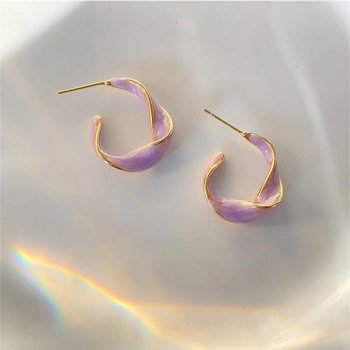 Lavender Purple Twisted Hoop Earrings$8.95
Lavender Purple Twisted Hoop Earrings$8.95 -
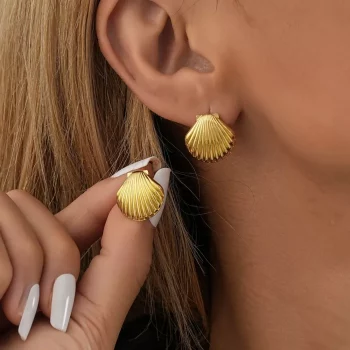 Vintage Shell Design Stud Earrings for Women$11.49
Vintage Shell Design Stud Earrings for Women$11.49 -
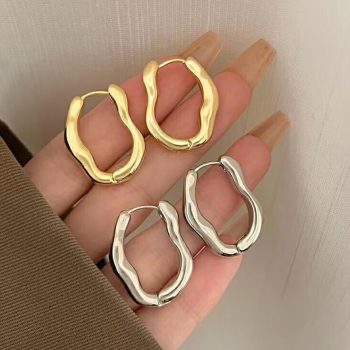 Luxurious Geometric Hoop Earrings for Women$9.65
Luxurious Geometric Hoop Earrings for Women$9.65 -
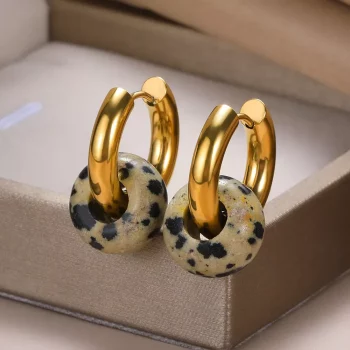 Women’s Natural Stone Hoop Earring$21.49
Women’s Natural Stone Hoop Earring$21.49 -
Product on sale
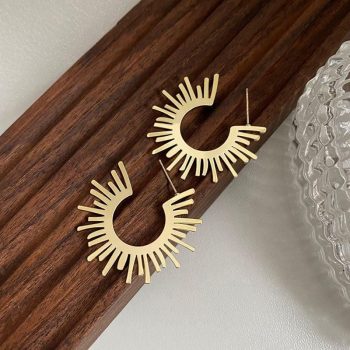 Chic Sunflower Hoop Earrings for WomenOriginal price was: $18.98.$9.49Current price is: $9.49.
Chic Sunflower Hoop Earrings for WomenOriginal price was: $18.98.$9.49Current price is: $9.49. -
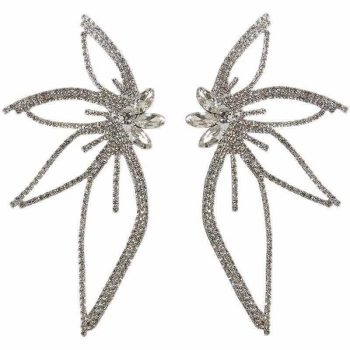 Chic Maple Leaf Zircon Earrings$9.49
Chic Maple Leaf Zircon Earrings$9.49
Overview of Common Causes
You may be worried about why your ear is bleeding after taking out an earring – there are a few common causes to consider. One of the more likely causes is an infection due to bacteria entering through the piercing hole. This can result in pain and inflammation which can lead to bleeding.
Another cause could be wax buildup within the ear which, when impacted, or pushed too far back on a q-tip for example, can lead to irritation and eventually bleeding.
Lastly, if the earring was left in for too long it may have caused an aching sensation leading to tearing of the skin inside of the ear and thus causing a bleed.
When these issues occur, they often come with other symptoms such as redness around the piercing area, swelling, itching, discharge from the ear and even difficulty hearing in some cases.
If any of these symptoms appear alongside a bleed it’s best to seek medical advice from your doctor or pharmacist as soon as possible so that you can get appropriate treatment for whatever issue has arisen.
Although these are common causes for why your ear might be bleeding after taking out an earring, it’s always important to take into consideration any recent activities that occurred prior to noticing this symptom – this will help narrow down what could be causing it and how best to treat it moving forward.
Symptoms of Bleeding
It’s ironic that removing an earring can result in a bloody surprise! Symptoms of bleeding after taking out an earring can range from mild to severe.
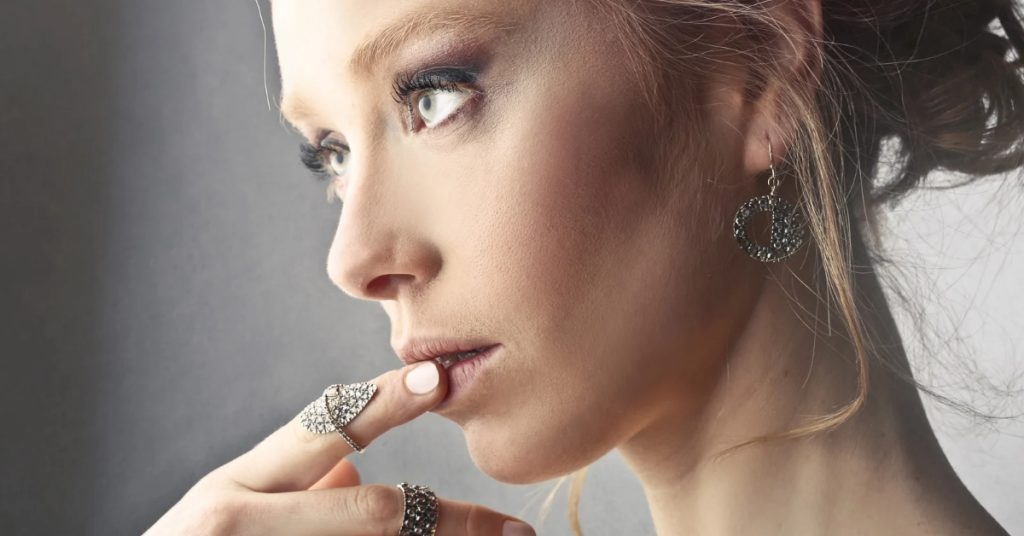
Many people might experience a slight itching sensation before or during the removal process. This could be caused by wax buildup in the ear canal, which is why it’s important to clean your ears regularly. Also see our post on possible reasons why do my ears itch when I wear earrings.
In addition, some people might notice a few drops of blood when they take out their earrings. Others may experience pain and profuse bleeding with clots that require medical attention.
In more serious cases, someone may experience dizziness or fainting as well as hearing loss due to a blockage of the ear canal by excessive blood clotting. It is crucial to seek immediate medical attention if any of these symptoms are experienced after removing an earring.
Additionally, anyone experiencing persistent pain should also consult a doctor for proper diagnosis and treatment options.
Any kind of bleeding from the ears should not be ignored and requires prompt attention to prevent further complications such as infection or hearing damage that can occur if it progresses unchecked.
Knowing what symptoms could indicate something more serious can help you make informed decisions about how best to treat any persisting effects from taking out an earring.
Moving on, it’s important to learn how to stop the bleeding if one does occur…
How to Stop the Bleeding
Removing an earring can sometimes lead to unwanted bleeding, so it’s important to know how to quickly and effectively stop the flow. To help with this, here’s a list of three key steps you should take:
- Apply pressure: Apply gentle pressure directly on the area where the earring was removed for 5-10 minutes. This will help slow or stop any bleeding that may be present.
- Clean the area: When you’re done applying pressure, clean the area with mild soap and warm water. Pat dry gently with a soft cloth, but don’t rub it too hard as this can cause irritation or further injury.
- Use ice packs: Once the area is clean and dry, apply an ice pack wrapped in a soft cloth directly over the affected area for 10-15 minutes at a time, up to four times a day for maximum benefit.
-
Product on sale
 Exquisite Design Ladies WatchOriginal price was: $63.00.$27.00Current price is: $27.00.
Exquisite Design Ladies WatchOriginal price was: $63.00.$27.00Current price is: $27.00. -
Product on sale
 Luxury Fashion Womens Wallet$11.00 – $15.00
Luxury Fashion Womens Wallet$11.00 – $15.00 -
Product on sale
 Feminine Wallet Card HolderOriginal price was: $26.00.$15.00Current price is: $15.00.
Feminine Wallet Card HolderOriginal price was: $26.00.$15.00Current price is: $15.00. -
Product on sale
 Long Women Double Zipper WalletOriginal price was: $18.00.$15.00Current price is: $15.00.
Long Women Double Zipper WalletOriginal price was: $18.00.$15.00Current price is: $15.00. -
Product on sale
 RFID Women’s Leather Wallet$17.00 – $21.00
RFID Women’s Leather Wallet$17.00 – $21.00 -
Product on sale
 Long Women Wallets Pu LeatherOriginal price was: $29.00.$15.00Current price is: $15.00.
Long Women Wallets Pu LeatherOriginal price was: $29.00.$15.00Current price is: $15.00.
Taking proper precautions and following these simple steps can help ensure that your ear care routine remains safe and free of injury prevention risks when removing an earring from your ears.
Keeping track of these tips can go a long way towards helping keep your ears healthy and free from harm in the future! With proper care taken ahead of time, there shouldn’t be any need to worry about seeing a doctor unless symptoms persist beyond several days or worsen over time.
When to See a Doctor
If you experience pain, swelling, or any other unusual symptoms after taking an earring out, it may be time to see a doctor. For instance, imagine you are hiking and take an earring out at the top of a mountain.
If the area around your ear is still red or swollen even after taking proper care of it for several days, it’s likely best to seek medical attention.
Certain risk factors can increase your chances of needing to see a doctor for bleeding from an ear piercing.
These include having diabetes or an autoimmune disorder; being on blood thinners; using topical steroids near the piercing site; and having had radiation therapy in the area where the piercing occurred. Additionally, people who have recently been through chemotherapy may be more susceptible as well.
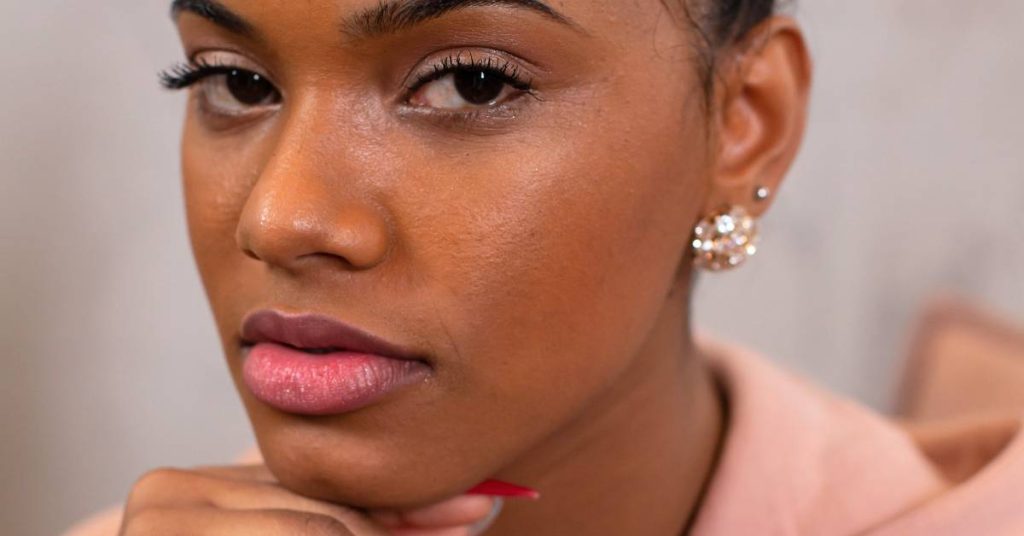
To help manage any pain associated with bleeding from an earring removal, you can apply cold compresses periodically throughout the day and gently cleanse the area with soap and water twice daily.
However, if these methods don’t reduce the swelling and discomfort within a few days – or if there is pus present – then it’s important to make an appointment with your healthcare provider right away. Taking appropriate steps now can help avoid further complications down the road.
| Risk Factor | Description | Impact |
|---|---|---|
| Diabetes | A chronic condition caused by elevated levels of glucose in the blood | Increased susceptibility to infections like cellulitis |
| Autoimmune Disorder | A group of disorders where your body attacks its own cells | Immune system is weakened which increases risk for infection |
| Blood Thinners | Medications that slow down clotting so that blood flows more easily | Makes healing process slower which increases risk for infection |
| Topical Steroids | Medicated cream used to reduce inflammation in skin conditions | Increases risk for infection by inhibiting production of collagen necessary for wound healing |
| Radiation Therapy | Exposure to high doses of radiation used to treat cancer | Inhibits scar formation which affects healing process |
| Chemotherapy | Treatment using drugs/medicines used to kill cancer cells | Weakens immune system increasing susceptibility to infection |
How to Prevent Further Bleeding
To avoid further bleeding, it’s important to take some simple precautions. Clean the area around the piercing with a soft, clean cloth twice a day and gently pat dry. This will help keep clogged pores from becoming infected.
Make sure that you are only using jewelry made of gold or titanium for your piercings; this is because other metals may cause an allergic reaction which could lead to inflammation and infection. Be sure to remove your earrings at night, as leaving them in can also increase your risk of infection.

When taking out earrings, do so gently in order to prevent trauma or pulling too hard on the tissue surrounding the piercing. It is recommended that you replace earrings every 3-4 months so as not to add extra stress on the skin around the piercing hole.
Finally, make sure to follow all aftercare instructions provided by your doctor when applying any ointments or creams that may be used during healing. Be sure to see our post about when you can change earrings after piercing.
By taking these precautions, you can help reduce the risk of further bleeding from taking out earrings and ensure proper healing of the pierced area.
To treat existing bleeding, looking into home remedies such as cold compresses and tea tree oil may be a beneficial next step in managing symptoms associated with ear bleeding caused by removing earrings.
Home Remedies to Treat Ear Bleeding
Now that you understand how to prevent further bleeding from your ear, it’s important to look into home remedies that may help treat it.
Ear hygiene and self-care are key to helping treat any issue involving the ear.
The first step in treating any minor ear injury such as a cut or scrape is keeping the area clean.
It’s important to keep the area around and inside of the ear free from dirt and bacteria.
Cleaning the outside of the ear with a damp cloth can help reduce infection risk while keeping it dry by avoiding putting anything inside of it such as cotton swabs.
Additionally, using an over-the-counter antiseptic cream can help kill germs on contact and reduce redness or swelling around the affected area.
Another way to help treat any minor issue with the ears is heat therapy.
Applying warmth to a sore or painful area can provide relief from pain and decrease inflammation.
This can be done safely by applying a warm compress directly to the affected area for 10 minutes at a time, several times throughout the day if needed.
Doing this will not only provide comfort but also keep circulation flowing which helps speed up healing time for cuts or scrapes on or near your ears.
These simple tips are great starting points to taking care of your ears at home before seeking medical treatment for more serious issues like excessive bleeding after taking out an earring.
Taking proper care of your ears now will ensure they stay healthy in the long run so you don’t have similar issues in the future!
To move onto treatment options, consider consulting with a doctor about what solutions might be best suited for your situation.
-
Product on sale
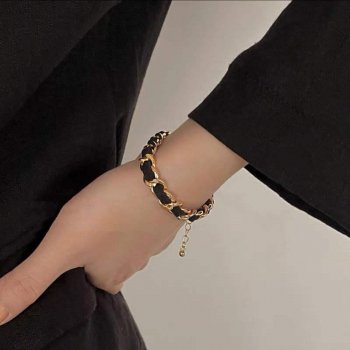 Elegant Vintage Rose Gold Black Woven BraceletOriginal price was: $14.60.$9.49Current price is: $9.49.
Elegant Vintage Rose Gold Black Woven BraceletOriginal price was: $14.60.$9.49Current price is: $9.49. -
Product on sale
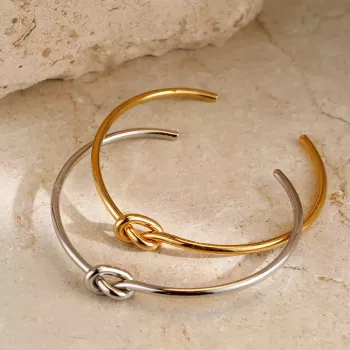 Twist Knot Stainless Steel Cuff BraceletOriginal price was: $50.46.$15.29Current price is: $15.29.
Twist Knot Stainless Steel Cuff BraceletOriginal price was: $50.46.$15.29Current price is: $15.29. -
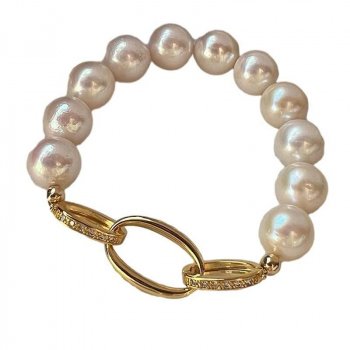 Chic Crystal & Pearl Hand Catenary Fashion Mood Tracker Bracelet$9.49
Chic Crystal & Pearl Hand Catenary Fashion Mood Tracker Bracelet$9.49 -
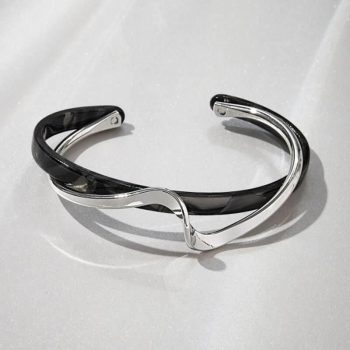 Geometric Metal Charm Bracelet for Women$14.49
Geometric Metal Charm Bracelet for Women$14.49 -
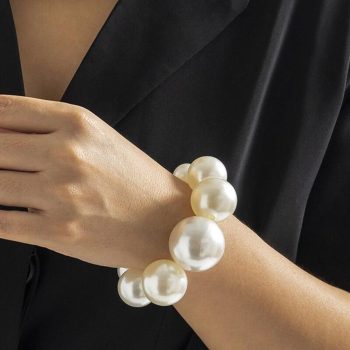 Womens Round Pearl Charm Bracelet$13.95
Womens Round Pearl Charm Bracelet$13.95 -
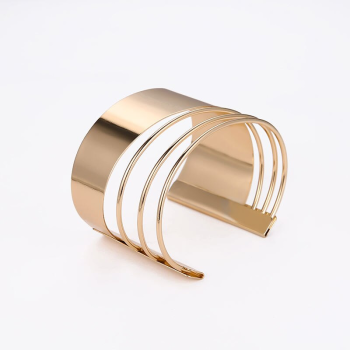 Women’s Bohemian Gold-Plated Geometric Cuff Bangle$15.65
Women’s Bohemian Gold-Plated Geometric Cuff Bangle$15.65
Treatment Options
You might need to consult a doctor for more serious issues like excessive bleeding, so it’s important to explore treatment options available. For example, if you use a cotton swab too often and accidentally scrape the inside of your ear, your doctor may prescribe an antibiotic cream or ointment to help the healing process.
In addition to this, traumatic injury and skin infection are two other possible causes of ear bleeding that require medical attention. In these cases, your doctor may recommend over-the-counter pain relievers or antibiotics depending on the severity of the injury or infection.
In some cases, home remedies can be effective in treating minor ear bleeding. These include using warm compresses or saline solution to gently cleanse and disinfect the area around your earring hole.
Applying petroleum jelly or honey can also help reduce swelling and prevent further irritation from forming in the affected area. Additionally, avoiding any perfumes or hair products near your ears can help minimize any potential irritation that could lead to further bleeding.
Your overall outlook after experiencing ear bleeding depends largely on its underlying cause and how quickly you seek treatment for it.
While most cases resolve without complications with simple remedies at home, some people may need further medical intervention for more serious conditions such as infections or trauma injuries.

Therefore it’s important to take steps towards prevention by properly cleaning and caring for piercings as well as avoiding touching them unnecessarily with dirty hands or objects like cotton swabs..
Moving forward into the next section about Outlook & Prevention will provide additional information on how best to care for piercings moving forward in order to avoid future complications associated with them
Outlook and Prevention
By taking the proper precautions, you can enjoy your pierced ears without fear of bleeding. Bleeding after taking out earrings is usually caused by an infection or irritation of the piercing site.
To prevent this from happening in the future, it’s important to take good care of your piercings. Here are some tips:
- Clean the piercing twice a day with a mild soap and warm water.
- Make sure to properly dry and moisturize your piercings after cleaning them.
- Avoid putting too much pressure on the pierced area when removing earrings—use gentle pressure instead.
- Don’t forget to regularly change out your jewelry for new pieces that are made of non-irritating materials like gold or titanium.
If you do experience bleeding after taking out earrings, seek medical attention immediately as it could be a sign of something more serious going on within your body—such as an allergic reaction or infection—which requires treatment right away to avoid further complications down the line.
Taking proper care and being mindful can help you prevent any unwanted bleeding in the future!
Frequently Asked Questions on Why Is My Ear Bleeding After Taking Earring Out

What are the risks of leaving the earring in after bleeding has occurred?
Leaving the earring in after bleeding can put you at risk for infection. Proper hygiene is essential for preventing this issue, so be sure to keep your ears clean and use an antiseptic if needed.
Are there any over-the-counter medications to treat ear bleeding?
Painting a picture of your relief, you may take preventative measures to avoid further bleeding. Over-the-counter medications can help reduce discomfort and swelling, but it is always best to seek medical advice in case of infection.
Is it safe to put a new earring in after the bleeding has stopped?
It is generally safe to put a new earring in after the bleeding has stopped, as long as you clean it and the area around your ear with appropriate cleaning supplies. Be sure to thoroughly clean your earrings too.
Do certain types of earrings increase the risk of bleeding?
You may be asking yourself, “Is wearing earrings a pain in the neck?”Yes, certain earring types and piercing methods can increase the risk of infection and bleeding. Be sure to research and use safe materials and techniques when getting pierced.
What are the long-term effects of ear bleeding?
You should take steps to prevent infection and reduce inflammation after ear bleeding. This may include applying a cold compress, using over-the-counter pain relief medications, and avoiding wearing earrings for a few days. Long-term effects of ear bleeding can include hearing loss or an infection in the inner or outer ear.
Conclusion

You’ve now learned about the common causes of ear bleeding after taking out an earring and how to stop it.
It can be a scary experience, but with the right knowledge you can treat it quickly and safely.
So if you ever find yourself in this situation, don’t panic—take a deep breath and remember what you just read.
Taking care of your ears is important for maintaining good health, so make sure to follow prevention tips like cleaning your ears regularly and changing your earrings often.
With that said, cherish each moment because time flies faster than we think!

